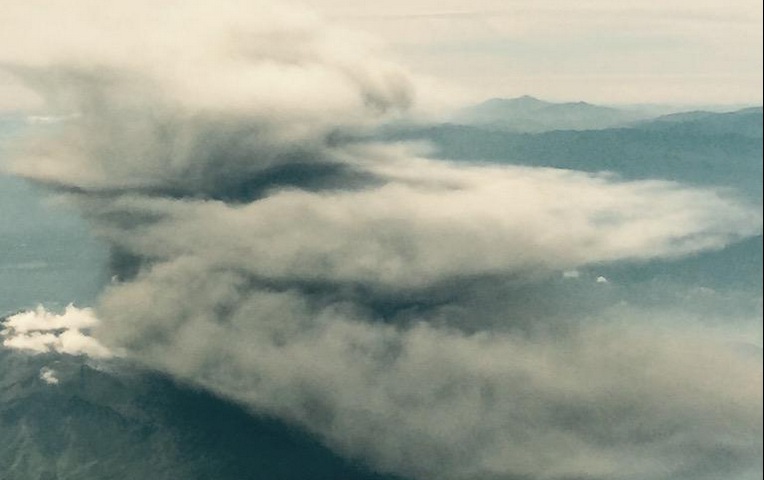Mount Aso (Asosan) on Japan’s Kyushu island erupted early Monday, September 14

Japan's Asosan volcano erupted about 00:43 UTC on Monday, September 14, 2015, sending a plume of thick black smoke and ash about 2.1 km (1.2 miles) into the air and disrupting flights.
According to the Japan Meteorological Agency, Asosan erupted without warning in one of Nakadake craters. The agency has raised the volcanic alert level from 2 to 3 – do not approach the volcano.
According to media reports, there were about 100 tourists and other visitors in the vicinity of the volcano at the time of eruption, but they were all quickly evacuated. There are no reports of injuries.
JMA's senior coordinator for volcanic affairs, Sadayuki Kitagawa, warned that a second eruption was possible "with possibility of volcanic rocks landing in an area over a 1 km radius (0.62 miles)." Kitagawa urged people to be vigilant for flying rocks and ash within a 2 km radius.



The volcano had a series of small-scale eruptions last week, JMA said and added that today's eruption exceeds the scale of past events.
Asosan is famous volcano for its largest caldera in the world. It is located at the center of Kyushu, about 1 000 km WSW of capital Tokyo and about 160 km (100 miles) N of recently restarted Sendai nuclear plant. Plant's operator, Kyush Electric Power Co, said the eruption would have no impact on the nuclear plant.
Time-lapse of Mount #Aso, #Japan's largest active volcano, erupting this morning. (via @kumamoto_rkk) pic.twitter.com/nMeHBQvBTN
— Alejandro Alvarez (@aletweetsnews) September 14, 2015
無事に熊本着いた~*\(^o^)/*阿蘇山どーん‼︎笑 pic.twitter.com/iAYMWfoLCn
— えり (@kmmep) September 14, 2015
Current location of Kumamoto Ash Cloud in black extending from Mt. Aso. Via JMA. pic.twitter.com/RqFrB3UpJ1
— Robert Speta (@robertspeta) September 14, 2015
Geologic summary
The 24-km-wide Asosan caldera was formed during four major explosive eruptions from 300,000 to 90,000 years ago. These produced voluminous pyroclastic flows that covered much of Kyushu. The last of these, the Aso-4 eruption, produced more than 600 cu km of airfall tephra and pyroclastic-flow deposits. A group of 17 central cones was constructed in the middle of the caldera, one of which, Nakadake, is one of Japan's most active volcanoes. It was the location of Japan's first documented historical eruption in 553 AD.
The Nakadake complex has remained active throughout the Holocene. Several other cones have been active during the Holocene, including the Kometsuka scoria cone as recently as about 210 CE. Historical eruptions have largely consisted of basaltic to basaltic-andesite ash emission with periodic strombolian and phreatomagmatic activity. The summit crater of Nakadake is accessible by toll road and cable car, and is one of Kyushu's most popular tourist destinations. (GVP)
Featured image: Asosan eruption on September 14, 2015. Image credit: @kmmep (via Twitter).

This eruption seem somewhat large but could be much, much larger. The article makes no mention of the height of the ash cloud, perhaps much less than 10KM, the minimum altitude needed to affect global weather. So, this volcano is dangerous but not a threat to the whole of Japan. It’s merely a minor pain.